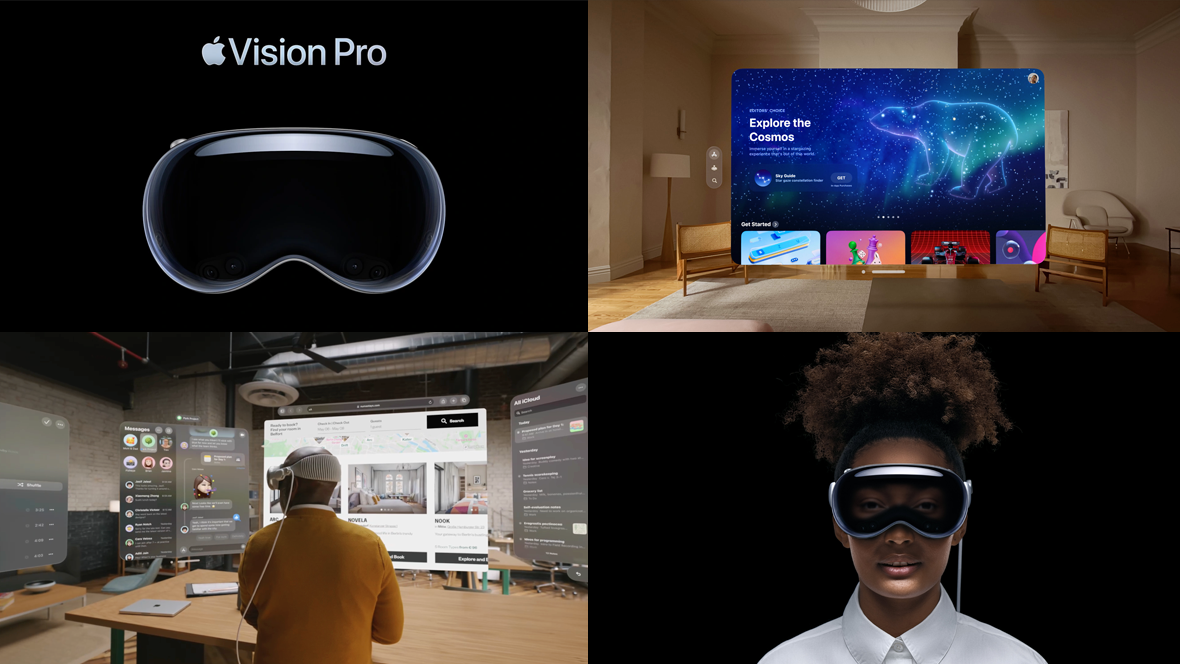The world of technology is constantly evolving, and one of the most exciting advancements in recent years has been the rise of augmented reality (AR). As a pioneer in the tech industry, Apple has been at the forefront of this revolutionary technology, consistently pushing the boundaries of what’s possible. In this comprehensive blog post, we’ll explore the latest updates and innovations in Apple’s augmented reality ecosystem, delving into the various ways in which this technology is transforming our lives.
ARKit and ARKit 5 Updates
Apple’s ARKit, the company’s augmented reality development framework, has been a game-changer since its introduction in 2017. ARKit has continued to evolve, with the latest version, ARKit 5, introducing several groundbreaking features that have significantly improved the AR experience for both developers and users.
Enhanced Tracking and Sensing Capabilities
One of the key advancements in ARKit 5 is the enhanced tracking and sensing capabilities. The framework now boasts improved motion tracking, allowing for more accurate and stable virtual object placement, even in complex environments. Additionally, the integration of Apple’s LiDAR technology (more on this later) has enabled even more precise depth sensing, enabling users to interact with virtual objects in a more natural and intuitive way.
Improved Scene Understanding
ARKit 5 also showcases advancements in scene understanding, enabling the framework to better comprehend the physical environment. This includes the ability to detect surfaces, planes, and objects, allowing developers to create more immersive and interactive AR experiences. The framework can now recognize vertical and horizontal surfaces, as well as dynamic objects, ensuring a more seamless integration of virtual elements into the real world.
Expanded Device Support
Another significant update in ARKit 5 is the expanded device support. The framework now works with a wider range of Apple devices, including older models, providing more users with access to cutting-edge AR experiences. This increased accessibility is crucial for the widespread adoption and democratization of augmented reality.
Collaborative AR Experiences
ARKit 5 also introduces support for collaborative AR experiences, allowing multiple users to interact with the same virtual environment simultaneously. This feature enables new possibilities for social, educational, and professional applications, fostering a sense of shared experience and enhancing the overall AR ecosystem.
LiDAR Technology Integration

One of the key advancements in Apple’s augmented reality efforts is the integration of LiDAR (Light Detection and Ranging) technology. LiDAR is a remote sensing method that uses laser light to measure distances, creating a detailed 3D map of the surrounding environment.
Precise Depth Sensing
Apple’s incorporation of LiDAR sensors in select devices, such as the iPad Pro and iPhone 12 Pro, has significantly improved the AR experience. The LiDAR sensors provide accurate depth information, enabling more precise object placement, occlusion handling, and improved occlusion handling. This, in turn, enhances the realism and immersion of AR experiences, making virtual objects appear more seamlessly integrated into the real world.
Enhanced Scene Reconstruction
The LiDAR technology also enables more accurate scene reconstruction, allowing for better surface detection and object recognition. This improvement is particularly beneficial for applications that rely on precise spatial awareness, such as interior design, e-commerce, and gaming.
Improved Measurement and Scanning
Another advantage of the LiDAR integration is the enhanced ability to measure and scan physical objects. Users can now easily obtain precise dimensions and 3D models of their surroundings, opening up new possibilities for applications like home improvement, furniture shopping, and architectural planning.
Synergy with ARKit
The combination of ARKit’s advanced tracking and sensing capabilities and the depth information provided by the LiDAR sensors creates a powerful synergy, further elevating the quality and versatility of Apple’s augmented reality ecosystem.
AR in Apple Devices
Apple’s commitment to augmented reality is evident across its device lineup, with various hardware and software integrations that enable seamless AR experiences.
iPhone and iPad
The introduction of ARKit has made it possible for iPhones and iPads to become powerful AR platforms. Users can now access a wide range of AR applications, from gaming and entertainment to productivity and e-commerce, all powered by the advanced capabilities of these devices.
Apple Silicon and Performance
The integration of Apple’s custom-designed silicon, such as the A14 Bionic chip, has further enhanced the performance and efficiency of AR experiences on Apple devices. These powerful processors, combined with optimized software, ensure smooth and responsive AR interactions, even on more resource-intensive applications.
Seamless Integration with iOS
Apple’s AR ecosystem is tightly integrated with the iOS operating system, providing a consistent and intuitive user experience. This integration allows for seamless transition between real-world and virtual environments, enabling users to effortlessly interact with and manipulate AR content.
AR-Specific Hardware Features
In addition to the LiDAR integration, some Apple devices, such as the iPhone 12 Pro and newer iPad Pro models, feature specialized hardware components designed to enhance AR experiences. These include improved camera systems, motion sensors, and advanced processing capabilities, all of which contribute to the overall quality and responsiveness of AR applications.
AR Applications in Everyday Life
Augmented reality has the potential to transform numerous aspects of our daily lives, and Apple’s AR ecosystem is at the forefront of this revolution.
Shopping and E-commerce
One of the most prominent applications of AR in everyday life is in the realm of shopping and e-commerce. Apple’s AR tools allow users to virtually place products, such as furniture and home decor, in their own living spaces, enabling them to make more informed purchasing decisions. This feature has been particularly useful during the COVID-19 pandemic, when in-person shopping has been more limited.
Interior Design and Home Improvement
AR has also revolutionized the world of interior design and home improvement. Users can now use their Apple devices to visualize furniture, appliances, and other home elements in their actual living spaces, making the planning and decision-making process much more intuitive and efficient.
Education and Learning
Augmented reality has also found its way into the education sector, with Apple’s AR tools enabling more engaging and immersive learning experiences. Students can now interact with 3D models, explore virtual environments, and visualize complex concepts in a way that was previously impossible.
Healthcare and Wellness
The healthcare industry has also embraced Apple’s AR capabilities, with applications that assist in medical training, visualization of anatomical structures, and even remote patient care. AR can provide healthcare professionals with a more comprehensive understanding of the human body and facilitate more efficient treatment and diagnosis.
Navigation and Wayfinding
Augmented reality has the potential to revolutionize the way we navigate and find our way in the physical world. Apple’s AR tools can overlay directional cues, maps, and other location-based information directly onto the user’s surroundings, enhancing the experience of getting from point A to point B.
AR in Gaming
The gaming industry has been quick to embrace the potential of augmented reality, and Apple’s AR ecosystem has played a significant role in this evolution.
Immersive Gaming Experiences
AR-powered games on Apple devices offer users a unique and immersive gaming experience, blending the virtual and physical worlds. Players can now interact with and manipulate game elements as if they were part of their actual surroundings, creating a sense of presence and realism that was previously unattainable.
Location-based Gaming
Apple’s AR capabilities have also enabled the development of location-based gaming experiences, where the physical environment becomes an integral part of the gameplay. These games encourage users to explore their surroundings, interact with virtual elements, and engage in social interactions, fostering a sense of community and discovery.
Multiplayer and Collaborative Gaming
Augmented reality has also facilitated the rise of multiplayer and collaborative gaming experiences on Apple devices. Users can now share the same virtual space, engaging in competitive or cooperative gameplay that transcends the boundaries of individual screens.
AR Gaming Accessories
To further enhance the AR gaming experience, Apple has also explored the development of specialized AR gaming accessories. These may include controllers, haptic feedback devices, and other peripherals that seamlessly integrate with AR applications, providing a more immersive and engaging gaming experience.
Developments in AR Glasses
One of the most anticipated advancements in Apple’s augmented reality ecosystem is the potential development of AR glasses or a mixed reality headset.
Rumors and Speculations
Apple has long been rumored to be working on AR glasses or a mixed reality headset, with numerous reports and industry analysts speculating on the company’s plans. While Apple has not officially confirmed these developments, the tech giant’s consistent investment in AR technology suggests that such a product may be in the works.
Potential Features and Capabilities
If Apple does unveil an AR or mixed reality headset, it is expected to feature advanced technology, including high-resolution displays, powerful processors, and sophisticated sensors. The device could potentially offer features like hand tracking, eye tracking, and seamless integration with other Apple products, providing users with a truly immersive and intuitive augmented reality experience.
Challenges and Considerations
The development of AR glasses or a mixed reality headset is not without its challenges. Apple will need to address issues such as battery life, comfort, and overall user experience to ensure that the product is both practical and appealing to a mainstream audience.
Impact on the AR Ecosystem
The introduction of an Apple AR or mixed reality headset could have a significant impact on the broader augmented reality ecosystem. As the company has done with its other products, Apple’s entry into this market could potentially drive innovation, set industry standards, and accelerate the adoption of AR technology across various sectors.
Future Prospects of Apple AR
As Apple continues to push the boundaries of augmented reality, the future prospects of the company’s AR ecosystem are both exciting and promising.
Increased Integration Across Devices
One potential direction for Apple’s AR efforts is the continued integration of AR capabilities across its entire device lineup, from iPhones and iPads to potential AR glasses or headsets. This seamless integration would enable users to transition between different form factors and enjoy a consistent and cohesive AR experience.
Advancements in Software and AI
Apple’s focus on software and AI development will likely play a crucial role in the future of its AR ecosystem. Improvements in areas like computer vision, object recognition, and spatial awareness could lead to even more sophisticated and intuitive AR applications.
Expanded AR Ecosystem and Developer Support
As the demand for AR experiences grows, Apple will likely continue to invest in and expand its AR ecosystem, providing developers with more robust tools and resources to create innovative applications. This, in turn, will drive the adoption and evolution of AR technology across various industries.
Potential Forays into AR-Enabled Hardware
While the potential development of AR glasses or a mixed reality headset is the most widely discussed hardware prospect, Apple may also explore other AR-enabled devices, such as wearables or automotive integrations, further expanding the reach of its augmented reality ecosystem.
Societal and Cultural Impact
As augmented reality becomes more prevalent in our daily lives, the impact of Apple’s AR efforts will likely extend beyond the technological realm, influencing societal and cultural norms. From education and entertainment to commerce and communication, AR has the potential to transform the way we interact with the world around us.
Conclusion

Apple’s commitment to augmented reality is undeniable, and the company’s ongoing innovations in this field are poised to revolutionize the way we experience and interact with the digital and physical worlds. From the advancements in ARKit and LiDAR technology to the integration of AR across Apple’s device lineup, the tech giant is paving the way for a future where the boundaries between the real and virtual become increasingly blurred.
As we look ahead, the potential for Apple’s AR ecosystem to continue its rapid evolution is exciting. The prospect of AR glasses or a mixed reality headset, coupled with the company’s focus on software and AI development, suggests that the future of augmented reality is bright and full of possibilities. Ultimately, Apple’s unwavering pursuit of innovation in this space will continue to shape the way we live, work, and play, ushering in a new era of immersive and transformative experiences.
